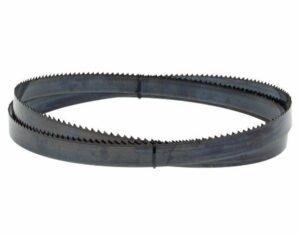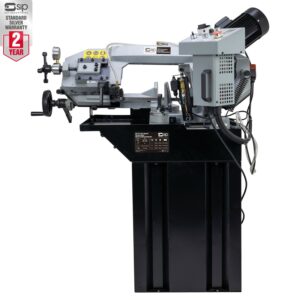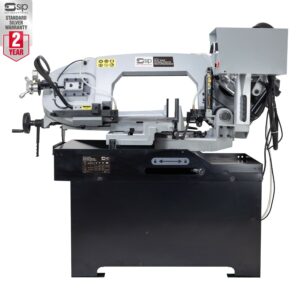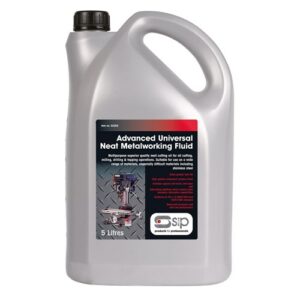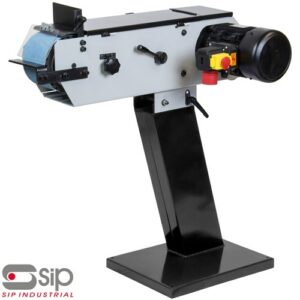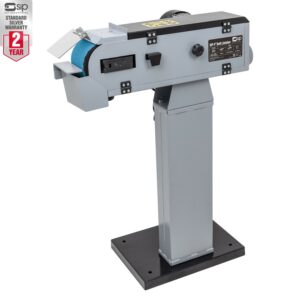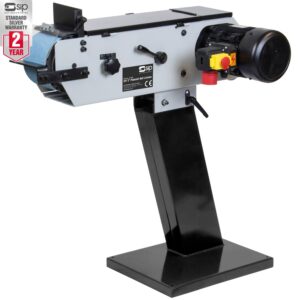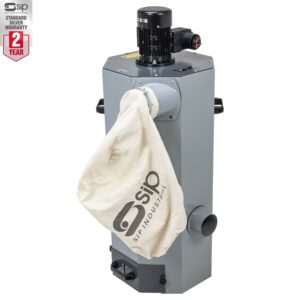Showing 21–29 of 29 results
How do metal-cutting bandsaw machines work?
Bandsaws use a continuous band of long-toothed metal stretched between at least two wheels. As the material is fed through, the bandsaws downward facing teeth cut, helping keep users safe. This structure allows for the use of differently sized and shaped blades, so users can create straight and curved cuts. For very curved cuts, fit a narrower blade, and vice versa. One of the best features of the bandsaw is the inclusion of a blade guard, the direction of which can be easily changed. Not only does this make using the bandsaw safer, by limiting the amount of deflection, but it also increases the precision of the cut. Convinced? Browse our full range today or, for our expert recommendations, you can call us or send us an email.
Are metal-cutting bandsaw machines easy to use?
Arguably the trickiest thing about using a bandsaw is the setup. Once set up, however, the bandsaw is simple and easy to use and becomes a real favourite for metalworkers of all levels. The metal-cutting bandsaw offers fast accurate cutting without strain on the users, especially when cutting large amounts of metal. As long as you use a blade with the current number of cutting teeth per inch at the correct cutting speed, cutting metals can be just as simple as cutting wood. For more advice on which metal-cutting bandsaw machine would be best for you, you can call us or drop us an email and we will get back to you as soon as possible.
Can you use a metal cutting bandsaw machine for straight and curved cuts?
Metal-cutting bandsaw machines, just as with wood-cutting bandsaws, are capable of both straight and curved cuts, as long as you have the correct blade. For tighter curves, fit your bandsaw with narrower blades, while if you are looking for straighter cuts, a wider blade will be best. Similarly, if a smooth cut is important to your project, more teeth per inch are best. If you find yourself ordering today, add your chosen metal-cutting bandsaw to your online basket and enjoy free delivery with a range of secure payment options, including PayPal, VISA debit, AmEx, and Mastercard.
Are bandsaws different to scroll saws?
Although both are kinds of saws, bandsaws and scroll saws are very different, both in construction and usage. Scroll saws have ultrathin blades with downward-facing teeth, and are predominantly used for intricately detailed work, such as preparing inlay and dovetail joints, cutting fragile curves and corners, or removing excess material. This contrasts with bandsaws’ often larger, flexible blades, which feature long-toothed metal sheets. Able to cut both small and more substantial pieces of lumber, metal cutting bandsaws can easily handle straight and curved pieces. For more information about which is best for you, contact us here at Kendal Tools & Machinery today and we can share our expertise with you. Simply call us or fill in our enquiry form, outlining your requirements, and we’ll get back to you as soon as we can.
Can a metal-cutting bandsaw cut all metal?
When considering a metal-cutting bandsaw, you will need to know which type of metals your chosen bandsaw can handle. Metals are split into two varieties, ferrous and non-ferrous. Non-ferrous metals can be any that do not contain appreciable amounts of iron, and these can generally be cut by metal-cutting bandsaws with carbon steel blades. This includes: • Mild steels • Aluminium • Copper • Brass • Bronze Ferrous metals, on the other hand, contain iron and should be cut with metal-cutting bandsaws with bi-metal blades. This is true for: • Carbon, tool, structural, and stainless steels • Pipes and tubes • Die steel angles • Flat stock • Mixed metals containing iron To make sure your chosen metal-cutting bandsaw can handle the variety of metals you need it to, make sure you check the detailed specifications on each product page. If you are unsure you can call us or send us an email and we’ll find the best bandsaw for you.
What is the difference between a wood-cutting and a metal-cutting bandsaw?
Apart from their ability to cut different materials, how different are wood-cutting and metal-cutting bandsaws? The main differences between a wood-cutting and a metal-cutting bandsaw are: • A range of vertical and horizontal designs • A more substantial unit compared to a wood-cutting bandsaw, necessary due to the increased sturdiness of the metallic materials it needs to cut • More control of the speed of the blade – vital for cutting different types of metals For recommendations on our most popular metal-cutting bandsaws, reach out to our experts at Kendal Tools & Machinery. With decades in the industry, we have lots of experience to share with you and can help you find your perfect metal-cutting bandsaw. Simply call us or fill in our enquiry form, and we’ll get back to you as soon as we can.

